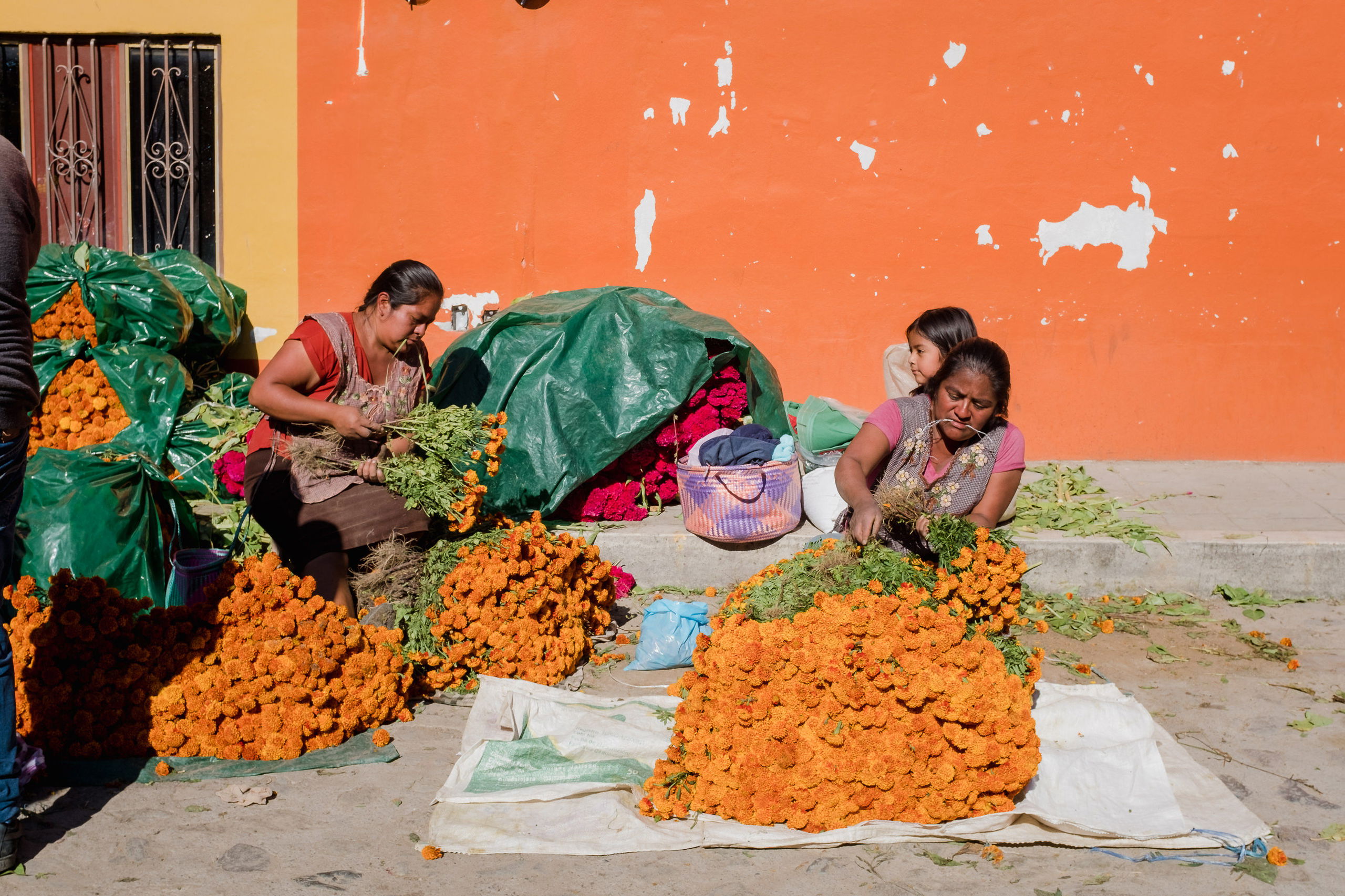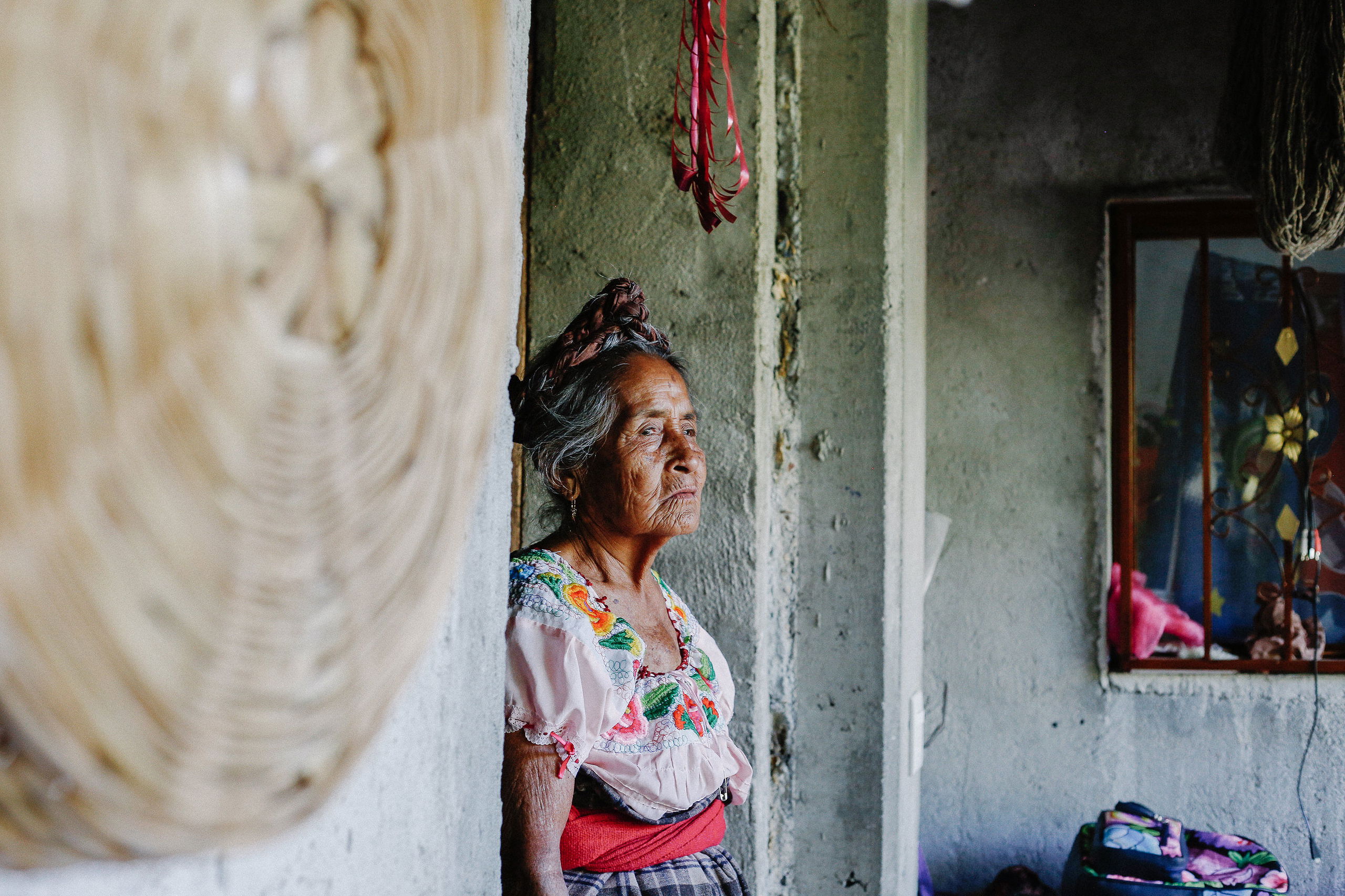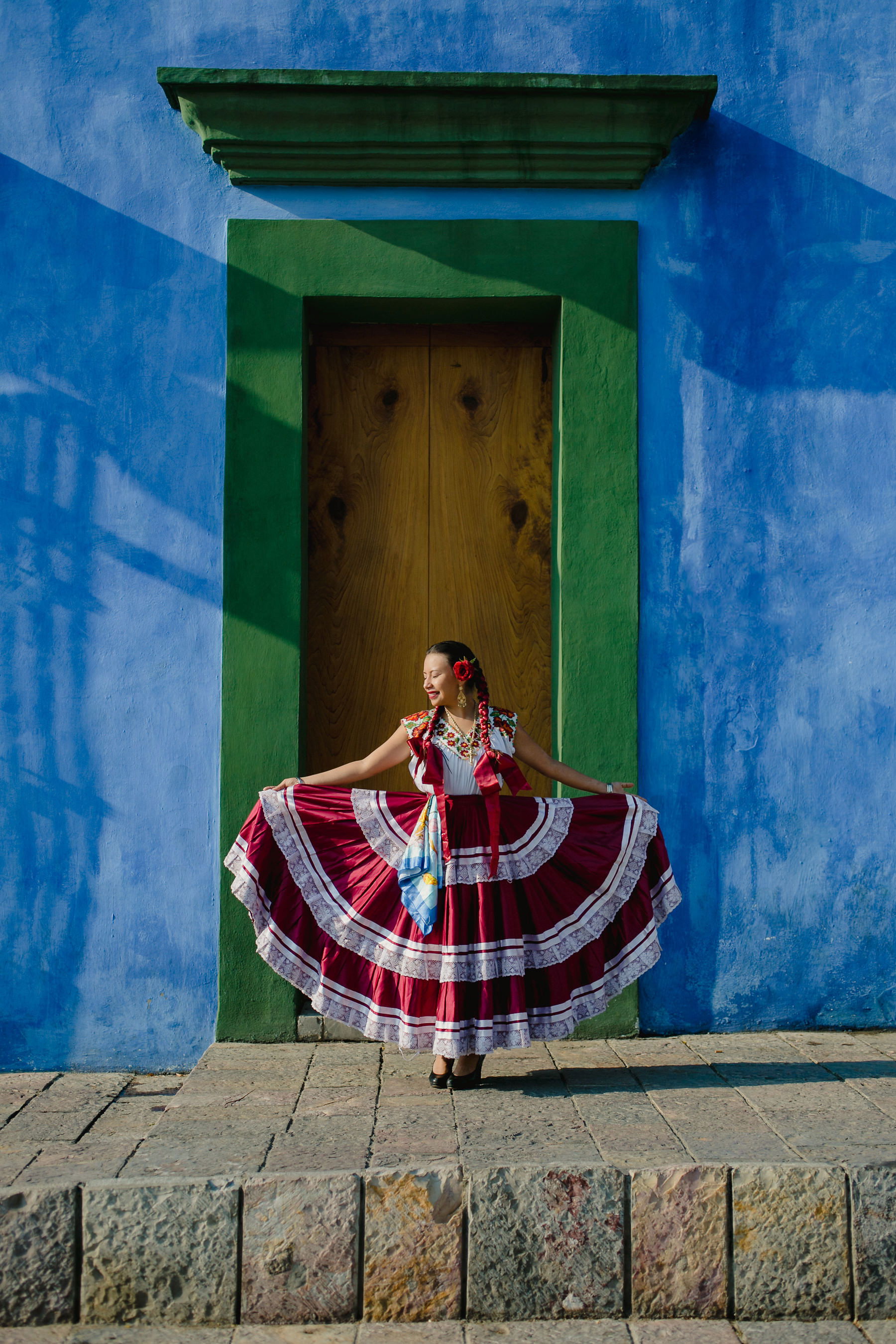
The Table Between Worlds
In the dall, Mexico hums with quiet preparation. The scent of cempasúchil, orange marigolds, hangs in the air. Markets fill with sugar skulls, beeswax candles, and paper garlands cut into intricate lace. Families sweep courtyards, polish framed photographs, and begin to cook. This is Día de los Muertos, the Day of the Dead, an annual homecoming for spirits long gone but never forgotten. Across Mexico, food becomes both offering and language: a bridge between generations, a way to say you are still here.


A Feast for Memory
The heart of Day of the Dead is the ofrenda, an altar layered with photographs, candles, flowers, and the favorite foods of loved ones who have passed. Each item carries meaning: salt for purification, water to quench a spirit’s thirst, and pan de muerto—bread of the dead—its domed top and bone-shaped ridges symbolizing the cycle of life and death.
At dusk, the air fills with the aroma of anise and orange blossom as loaves emerge from clay ovens. Their sugar-dusted crusts glisten under candlelight. Families place them beside tamales wrapped in banana leaves, bowls of mole as dark as midnight, and cups of steaming atole, a drink made from corn masa and cinnamon. These aren’t mere offerings, they are memories made edible.
In Oaxaca, the altars grow elaborate: handwoven textiles drape across tiers, mezcal bottles gleam beside clay figurines, and the faint sound of marimba music floats from nearby plazas. In Michoacán, families spend the night at the cemetery, lighting candles beside gravestones and sharing meals with the departed as if they had only stepped away for a moment.
The Foods of Día de los Muertos
Food, in this celebration is a map of Mexico’s regional diversity.
- Sugar Skulls and Calaveras de Chocolate: Hand-decorated confections bearing the names of ancestors, these sweet mementos remind everyone that death, in Mexican culture, is not an end but a continuation.4. Santa’s the figurehead, but the Kings hold the power
- Pan de Muerto: Sweet, tender, and perfumed with orange zest, it’s baked throughout the country during the last days of October. Some versions are dusted with pink sugar; others, like those in Puebla, are topped with sesame seeds.
- Mole Negro: Oaxaca’s signature sauce—made with more than thirty ingredients, including cacao, dried chilies, and plantains—is slow-cooked for hours. Its deep, smoky sweetness anchors the meal, often served over turkey or chicken.
- Tamales: Wrapped in corn husks or banana leaves, they vary from region to region—some filled with red chile pork, others with pineapple and raisins. In Yucatán, mucbil pollo, a massive baked tamal, is cooked underground during the holiday.
- Calabaza en Tacha: Candied pumpkin simmered with piloncillo (unrefined cane sugar), cinnamon, and orange peel—a dish that captures the warmth of autumn in every spoonful.

Beyond Mexico: What Countries Celebrate Dia de los Muertos
While Día de los Muertos is rooted in Mexico’s blend of Indigenous and Catholic traditions, its influence reaches far beyond its borders. In parts of Central America—Guatemala, Honduras, El Salvador—families also build altars and visit cemeteries, often adding their own regional foods.
In Los Angeles, San Antonio, and other U.S. cities with deep Mexican heritage, community altars fill parks and plazas. Bakers prepare pan de muerto by the thousands, and restaurants host multi-course dinners inspired by ancestral recipes. Though each celebration looks different, the emotion remains universal: remembrance, gratitude, and the joy of reunion.
The Taste of Time
Many Day of the Dead dishes draw on ingredients older than the Spanish conquest—corn, cacao, chilies, pumpkin, and honey. These flavors are the inheritance of the Nahua, Zapotec, and Mixtec peoples, whose belief in cyclical life shaped how Mexico understands death today. Every bite, every sip, is a dialogue between past and present. The grind of a stone metate preparing mole mirrors the sound heard five hundred years ago. The marigolds still bloom from seeds that once lined Aztec temples. The food may evolve, but the ritual endures: cooking as remembrance, sharing as devotion.
How to Celebrate Day of the Dead at Home
You don’t need an elaborate altar or ancestral recipe to honor the spirit of Día de los Muertos. Begin with something simple and sincere. Light a candle for someone you’ve lost. Set a photograph beside it. Bake or buy a loaf of pan de muerto, slice it thick, and serve it with hot chocolate scented with cinnamon. If you have children, invite them to help decorate sugar skulls or cut papel picado banners. Tell stories about your loved ones as you cook. In doing so, you’ll keep the true essence of the holiday alive: remembrance through ritual, connection through food.

Between Life and Legacy
To walk through Mexico during Día de los Muertos is to move through a dream made real. Streets glow with candlelight; laughter and music spill from doorways; cemeteries become places of celebration rather than sorrow. Everywhere, the living and the dead share the same table, if only for a night. For travelers, it’s an invitation, not to observe, but to understand. To taste a country’s philosophy of life in the sweetness of its bread, the heat of its chilies, and the poetry of its traditions.

Take Luxury Tour of Mexico with Modern Adventure.
Immerse yourself in Mexican culture and plan a Mexico tour. Book one of our signature Tastemaker journeys or your very own expertly crafted custom travel experience.


